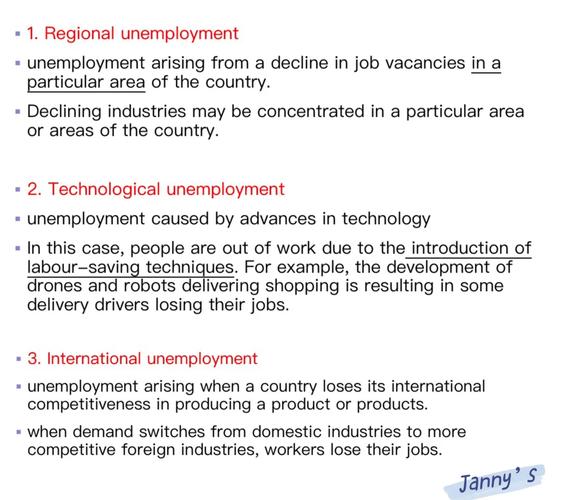Understanding Unemployment: A Comprehensive Guide
Unemployment is a complex issue that affects individuals, families, and entire economies. In this detailed guide, we will explore various aspects of unemployment, including its causes, impacts, and potential solutions. By understanding these dimensions, we can better navigate the challenges and opportunities associated with unemployment.
Causes of Unemployment
Unemployment can arise from a variety of factors, both economic and non-economic. Here are some of the most common causes:

-
Economic downturns: Economic recessions often lead to increased unemployment as businesses cut costs and reduce their workforce.
-
Technological advancements: Automation and digitalization can displace workers in certain industries, leading to job losses.
-
Lack of skills: A mismatch between the skills possessed by workers and the skills required by employers can contribute to unemployment.
-
Geographical factors: Workers may face unemployment due to a lack of job opportunities in their local area.

-
Demographic changes: Aging populations and changing labor force participation rates can impact unemployment rates.
Impacts of Unemployment
Unemployment has significant consequences for individuals and society as a whole. Here are some of the key impacts:
-
Financial strain: Unemployed individuals often face financial difficulties, including reduced income, increased debt, and limited access to credit.
-
Psychological effects: Unemployment can lead to stress, anxiety, and depression, as well as a loss of self-esteem and social isolation.
-
Health issues: Unemployment has been linked to increased rates of mental and physical health problems.
-
Social and economic instability: High unemployment rates can lead to social unrest, increased crime rates, and reduced economic growth.
Measuring Unemployment
Unemployment is typically measured using the unemployment rate, which is the percentage of the labor force that is unemployed and actively seeking work. Here’s a breakdown of the key components:
| Component | Description |
|---|---|
| Labor Force | The total number of people who are employed or actively seeking employment. |
| Employed | People who are currently working, either full-time or part-time. |
| Unemployed | People who are not working and actively seeking employment. |
It’s important to note that the unemployment rate can vary depending on the methodology used to calculate it, such as the U-3 rate (which only includes those actively seeking work) and the U-6 rate (which includes those who are marginally attached to the labor force and those working part-time for economic reasons).
Solutions to Unemployment
Addressing unemployment requires a multifaceted approach, involving both government policies and individual actions. Here are some potential solutions:
-
Education and training: Investing in education and training programs can help workers acquire the skills needed to succeed in the modern labor market.
-
Job creation: Governments can implement policies to stimulate job creation, such as infrastructure projects and tax incentives for businesses.
-
Support for businesses: Providing financial assistance and resources to struggling businesses can help them retain employees and create new jobs.
-
Workforce development: Collaborating with educational institutions and businesses to align curriculum with industry needs can help reduce the skills gap.
-
Job search assistance: Offering job search workshops, resume writing services, and networking opportunities can help unemployed individuals find new employment.
By understanding the causes, impacts, and potential solutions to unemployment, we can work together to create a more stable and prosperous future for all.








